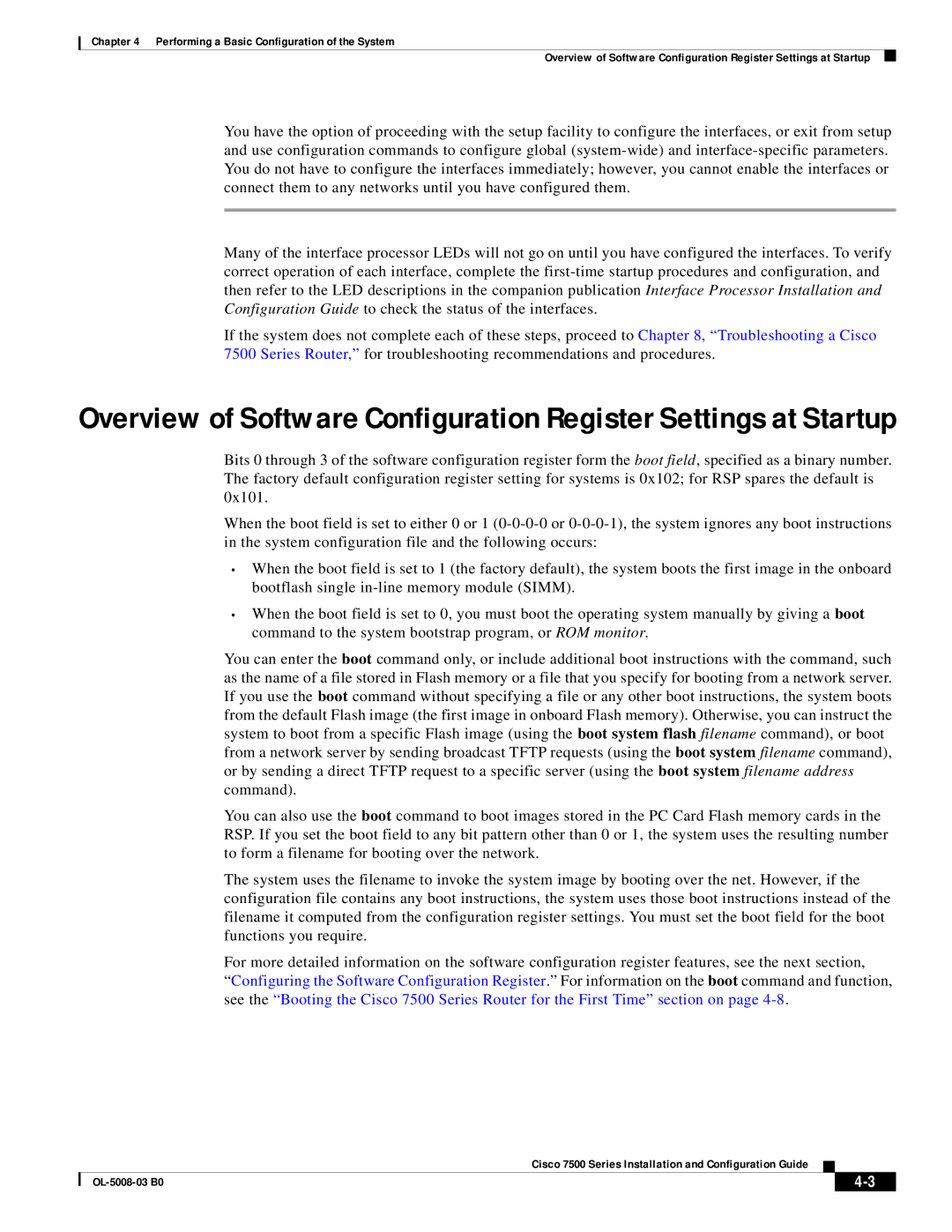
Chapter 4 Performing a Basic Configuration of the System
Overview of Software Configuration Register Settings at Startup
You have the option of proceeding with the setup facility to configure the interfaces, or exit from setup and use configuration commands to configure global
Many of the interface processor LEDs will not go on until you have configured the interfaces. To verify correct operation of each interface, complete the
If the system does not complete each of these steps, proceed to Chapter 8, “Troubleshooting a Cisco 7500 Series Router,” for troubleshooting recommendations and procedures.
Overview of Software Configuration Register Settings at Startup
Bits 0 through 3 of the software configuration register form the boot field, specified as a binary number. The factory default configuration register setting for systems is 0x102; for RSP spares the default is 0x101.
When the boot field is set to either 0 or 1
•When the boot field is set to 1 (the factory default), the system boots the first image in the onboard bootflash single
•When the boot field is set to 0, you must boot the operating system manually by giving a boot command to the system bootstrap program, or ROM monitor.
You can enter the boot command only, or include additional boot instructions with the command, such as the name of a file stored in Flash memory or a file that you specify for booting from a network server. If you use the boot command without specifying a file or any other boot instructions, the system boots from the default Flash image (the first image in onboard Flash memory). Otherwise, you can instruct the system to boot from a specific Flash image (using the boot system flash filename command), or boot from a network server by sending broadcast TFTP requests (using the boot system filename command), or by sending a direct TFTP request to a specific server (using the boot system filename address command).
You can also use the boot command to boot images stored in the PC Card Flash memory cards in the RSP. If you set the boot field to any bit pattern other than 0 or 1, the system uses the resulting number to form a filename for booting over the network.
The system uses the filename to invoke the system image by booting over the net. However, if the configuration file contains any boot instructions, the system uses those boot instructions instead of the filename it computed from the configuration register settings. You must set the boot field for the boot functions you require.
For more detailed information on the software configuration register features, see the next section,
“Configuring the Software Configuration Register.” For information on the boot command and function, see the “Booting the Cisco 7500 Series Router for the First Time” section on page
Cisco 7500 Series Installation and Configuration Guide
|
|
| |
|
|
